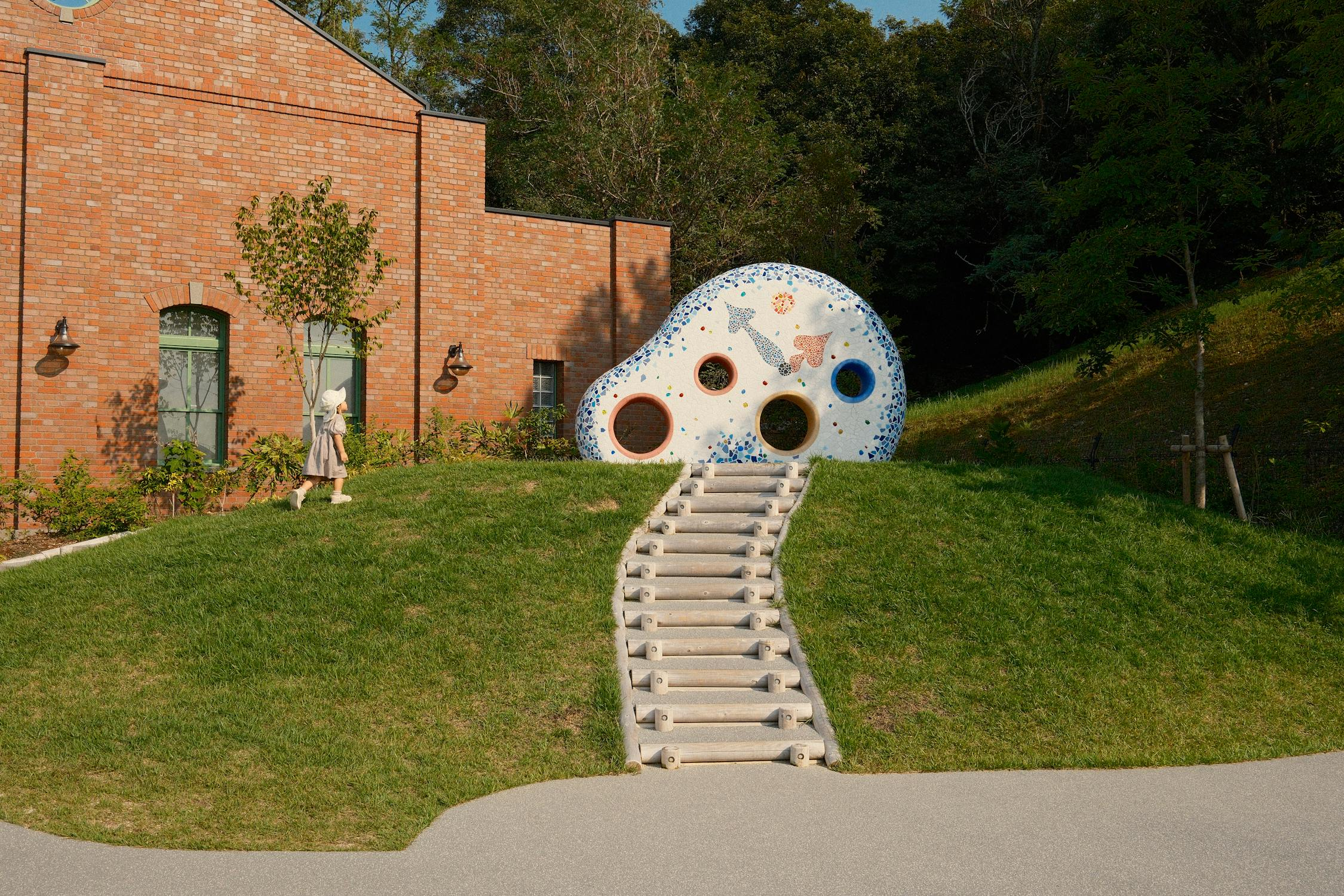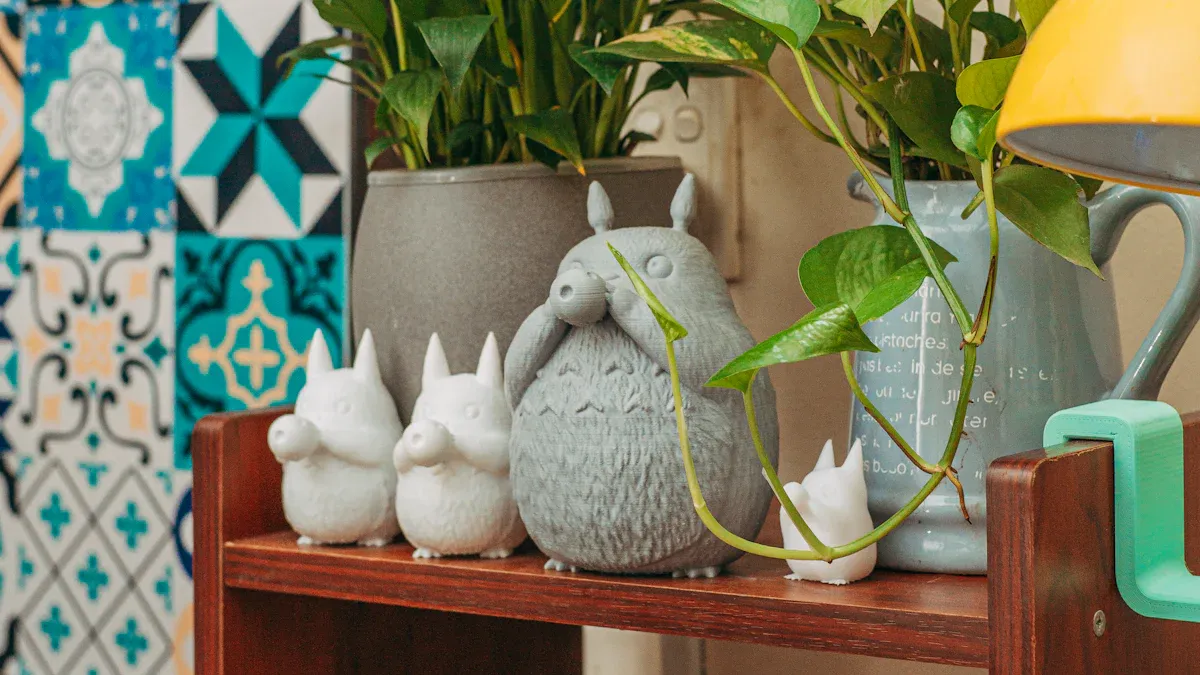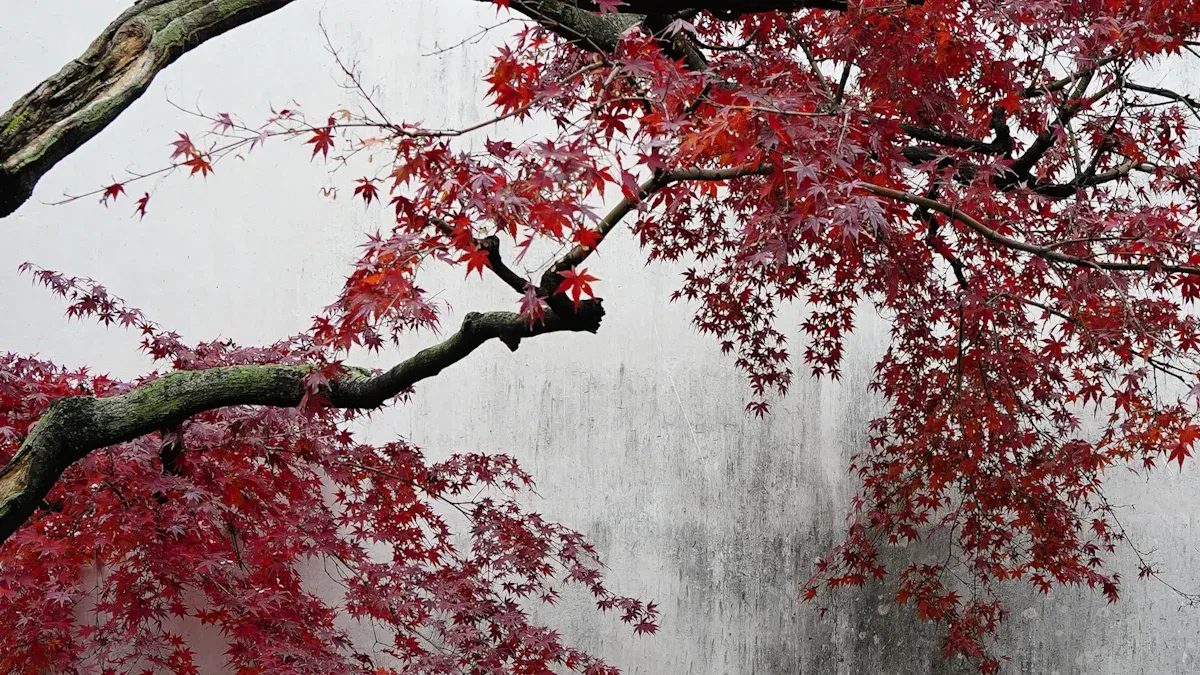What Defines the Timeless Beauty of Studio Ghibli's Art Style

Studio Ghibli’s art style draws you in with its mesmerizing hand-drawn animation and emotional storytelling. This unique approach has captivated audiences worldwide. For instance, Spirited Away broke records, earning $13.1 million during its opening weekend in Japan and surpassing $300 million at the local box office after its re-release. The studio’s films also create deep emotional connections. Audience reviews on platforms like IMDb reveal how movies like My Neighbor Totoro evoke joy, while Grave of the Fireflies stirs profound sorrow. These elements make Studio Ghibli art style a timeless treasure.
Key Takeaways
- Studio Ghibli's hand-drawn art gives a special look that stands out from computer-made animation.
- Soft, light colors and detailed characters show strong feelings, making the stories easy for everyone to understand.
- Ghibli movies mix real-life and fantasy, letting people enjoy magical worlds while relating to real experiences.
- Stories about memories and friendships in Ghibli films make people feel connected, making them want to watch again and share with others.
- Nature is very important in Ghibli movies, teaching care for the environment and reminding us of our bond with the Earth.
The Visual Magic of Studio Ghibli Art Style

Image Source: pexels
Hand-Drawn Animation and Painterly Backgrounds
Studio Ghibli’s commitment to hand-drawn animation sets it apart in a world dominated by digital techniques. Every frame feels alive, as if it were a painting brought to motion. You can see this dedication in the intricate details of their films, from the delicate brushstrokes of a forest in Princess Mononoke to the bustling streets of Spirited Away. This approach preserves a classic and artistic visual style that resonates deeply with audiences.
The painterly backgrounds in Studio Ghibli films evoke a sense of wonder and nostalgia. The soft gradients and textured layers create immersive worlds that feel both magical and familiar. This unique style has inspired animators globally, even influencing major studios like Disney and Pixar to value handcrafted storytelling. By prioritizing artistry over shortcuts, Studio Ghibli reminds you that true beauty lies in the details.
Tip: Pay close attention to the backgrounds in Ghibli films. They often tell a story of their own, adding depth to the narrative without the need for words.
Soft Pastel Colors and Dreamlike Atmosphere
The Studio Ghibli art style is defined by its soft color palettes and gentle gradients. These colors create a dreamlike atmosphere that draws you into the story. Whether it’s the warm hues of a sunset in My Neighbor Totoro or the cool blues of the ocean in Ponyo, the colors evoke emotions that words cannot fully capture.
Characters in Ghibli films often feature large, expressive eyes, which enhance the emotional depth of each scene. This attention to detail ensures that you feel connected to the characters, whether they are human, spirit, or something in between. The combination of pastel tones and expressive animation creates a visual experience that transcends language, making these films universally appealing.
-
Why it works:
- Soft colors soothe the viewer and create a sense of comfort.
- Gentle gradients mimic natural light, adding realism to fantastical settings.
- Expressive character designs amplify emotional storytelling.
Blending Realism with Fantasy in Visuals
Studio Ghibli excels at blending realism with fantasy, creating worlds that feel both tangible and magical. Their attention to detail allows you to suspend disbelief and fully immerse yourself in the story. For example, in Howl’s Moving Castle, the mechanical intricacies of the castle feel grounded in reality, even as it moves through a fantastical landscape.
The studio’s approach to animating character movement emphasizes realism. Characters interact with their environment in believable ways, whether it’s the way Chihiro stumbles while running in Spirited Away or the way Ashitaka rides his elk in Princess Mononoke. This careful attention to physics grounds you in the film’s reality, even when the setting is otherworldly.
Hayao Miyazaki’s vision plays a key role in this balance. He draws inspiration from real-world history and culture, blending these elements with imaginative storytelling. This combination creates unique universes that allow you to escape reality while still feeling connected to the world around you.
Note: The next time you watch a Ghibli film, notice how the fantastical elements feel rooted in something real. This is the magic of blending realism with fantasy.
Emotional and Thematic Resonance
Nostalgia and Comfort in Every Frame
Studio Ghibli films have a unique way of making you feel at home, no matter where you are. The combination of warm visuals, relatable characters, and heartfelt storytelling creates a sense of nostalgia that lingers long after the credits roll. Whether it’s the quiet countryside of My Neighbor Totoro or the cozy bathhouse in Spirited Away, every frame feels like a memory you’ve lived before. This emotional connection is what makes these films so comforting.
A study on how nostalgia influences perceptions highlights this emotional impact. The findings reveal that nostalgic elements, like familiar settings and heartfelt moments, enhance emotional connections and encourage viewers to revisit or recommend the experience. This is similar to how Studio Ghibli films draw you back time and again.
| Study Focus | Findings | Relationship to Nostalgia and Comfort |
|---|---|---|
| Tourists' cognitive image of Istanbul | Nostalgia influences perceptions of destinations. | Ghibli’s comforting themes evoke similar feelings of familiarity. |
| Affective destination image | Positive correlation with intention to revisit and recommend. | Nostalgia in Ghibli films strengthens emotional bonds with viewers. |
| Attractions and value variables | Nostalgic elements encourage revisits and recommendations. | Ghibli’s nostalgic visuals create lasting impressions on audiences. |
This table shows how nostalgia plays a powerful role in shaping emotional experiences, much like the Studio Ghibli art style does in its films.
Human Relationships and Everyday Life
Studio Ghibli excels at portraying human relationships with depth and authenticity. The films often focus on platonic bonds and everyday interactions, making the characters feel real and relatable. For example, in Spirited Away, Chihiro’s journey is shaped by her friendships, especially her bond with Haku. These relationships are not romantic but instead highlight trust, kindness, and mutual respect. This approach allows you to connect with the characters on a deeper level.
Critics often praise the way Studio Ghibli portrays female characters. These characters are complex and independent, navigating their lives without being defined by romantic interests. This focus on platonic relationships and personal growth sets Ghibli films apart from typical narratives. It also reflects everyday life, where relationships are often built on shared experiences and mutual understanding.
By showcasing ordinary moments, like cooking meals in Kiki’s Delivery Service or tending to a garden in Only Yesterday, the films celebrate the beauty of daily life. These small, quiet moments remind you to appreciate the simple joys around you.
Nature as a Central Theme
Nature plays a vital role in Studio Ghibli films, often serving as both a setting and a character. The lush landscapes, vibrant forests, and serene waterscapes create a deep connection between humans and the natural world. In Princess Mononoke, the conflict between industrialization and nature highlights the importance of living in harmony with the environment. Similarly, My Neighbor Totoro portrays nature as a friendly and nurturing presence, emphasizing its role as a neighbor rather than a distant force.
“Humans must strive to live in harmony with nature, whilst presenting us with the socio-cultural complexities of human-nature relationships.”
This quote reflects the underlying message in many Ghibli films. The narratives often explore how industrialization threatens harmony and community. Spirits or kami frequently appear as guardians of nature, reminding you of the delicate balance between progress and preservation.
“As a counterpoint to the Western notion of the Sublime, which represents Nature as a force that we, as humans, face only to be overwhelmed by its encompassing Oneness, the films produced by Studio Ghibli signify nature as a friendly neighbor.”
This perspective is beautifully illustrated in My Neighbor Totoro, where the natural world feels alive and welcoming. By blending ecological themes with fantastical elements, Studio Ghibli encourages you to reflect on your relationship with the environment.
The recurring theme of humans coexisting with nature adds depth to the Studio Ghibli art style. It transforms the films into more than just visual masterpieces—they become a call to action for environmental awareness.
Cultural and Artistic Influences on Studio Ghibli Art Style

Image Source: pexels
Japanese Folklore and Mythological Roots
Studio Ghibli draws heavily from Japanese folklore and mythology, creating stories that feel timeless yet deeply rooted in cultural heritage. You can see this influence in films like Spirited Away, where spirits and deities from Shinto beliefs populate the bathhouse. The character Totoro from My Neighbor Totoro embodies the kami, or spirits, that inhabit nature in Japanese tradition. These elements make the Studio Ghibli art style resonate with audiences familiar with these cultural motifs while introducing them to new viewers worldwide.
A study on Miyazaki’s works highlights how his characters often reflect posthumanist and nostalgic themes. This approach connects the mythical with the modern, allowing you to explore universal ideas through a uniquely Japanese lens.
| Research Focus | Key Insights |
|---|---|
| Identity in Miyazaki's films | Characters reflect posthumanist and nostalgic themes. |
| Historical and traditional elements in Ghibli | Films incorporate Japanese folklore and cultural heritage. |
| Human-nature relationships in Miyazaki's works | Themes of environmentalism and socio-cultural complexities are emphasized. |
Traditional Japanese Art and Aesthetic Principles
The Studio Ghibli art style owes much to traditional Japanese art and aesthetics. You’ll notice the influence of wabi-sabi, which values imperfection and simplicity, in the studio’s visuals. For example, the rustic charm of the countryside in Only Yesterday reflects this principle. The use of negative space, a hallmark of Japanese art, creates a sense of balance and tranquility in scenes like the quiet forests of Princess Mononoke.
The connection between Studio Ghibli and the game Ni no Kuni highlights the nostalgic and whimsical qualities of Ghibli’s aesthetic. Reviews often praise the studio’s ability to evoke emotion through its traditional visual charm, which resonates with audiences familiar with Japanese animation.
-
Key elements of Ghibli’s aesthetic:
- Wabi-sabi: Embracing imperfection and simplicity.
- Negative space: Creating balance and tranquility.
- Nostalgia: Evoking emotional connections through traditional visuals.
Hayao Miyazaki's Vision and Philosophy
Hayao Miyazaki’s vision shapes every aspect of Studio Ghibli’s art. His philosophy emphasizes the importance of hand-drawn animation, environmental harmony, and human connection. You can see his dedication to these values in films like Nausicaä of the Valley of the Wind, which explores the consequences of environmental destruction.
Miyazaki’s career reflects his deep understanding of Japan’s post-war animation industry. Over the years, he absorbed artistic influences that shaped his unique storytelling style. His works often blend historical and cultural elements with imaginative narratives, creating films that feel both personal and universal.
A study on Cold War ideology in Ghibli films reveals how Miyazaki’s themes often reflect socio-political complexities. This depth adds layers to his stories, making them relevant across generations.
| Research Focus | Key Insights |
|---|---|
| Miyazaki’s career in post-war animation | Highlights artistic influences shaping his storytelling. |
| Cold War ideology in Ghibli films | Explores socio-political themes and their impact on narratives. |
The Enduring Legacy of Studio Ghibli Art Style
Influence on Modern Animation Techniques
Studio Ghibli has left a lasting mark on animation technology. Its dedication to hand-drawn aesthetics has inspired advancements in both traditional and digital animation. For example, during the production of My Neighbors the Yamadas, the studio sought to replicate a watercolor effect. This goal led to significant changes in their production process, blending traditional techniques with new technologies. These innovations allowed the studio to maintain its signature hand-painted look while exploring modern methods.
You can also see Studio Ghibli's influence in how animators approach realism. The studio’s focus on natural movements, such as flowing water or swaying grass, has pushed the boundaries of animation. Scholars have noted that Hayao Miyazaki’s techniques bridge the gap between traditional and digital methods. This approach enhances the realism of animated effects, making them feel more lifelike.
By prioritizing artistry over shortcuts, Studio Ghibli has set a standard for animation studios worldwide. Its legacy continues to shape how animators balance creativity with technology.
Universal Appeal Across Cultures and Generations
The Studio Ghibli art style resonates with audiences of all ages and backgrounds. Its hand-painted backgrounds and fluid character animations create immersive worlds that feel both magical and relatable. The imaginative designs of characters, like Totoro or No-Face, blend the fantastical with the familiar, making them unforgettable.
The studio’s attention to everyday details also plays a key role. Simple moments, like cooking or walking through a forest, become cinematic experiences. These relatable scenes connect viewers to the story, regardless of cultural differences.
The art style evokes nostalgia, reminding you of childhood memories or universal emotions. This timeless quality ensures that Studio Ghibli films remain beloved across generations.
Why Studio Ghibli's Art Style Remains Timeless
Several factors contribute to the timelessness of the Studio Ghibli art style. Its lush, hand-painted backgrounds transport you to detailed, immersive worlds. The fluid character animations bring personalities to life through subtle movements. Imaginative designs and distinctive color palettes evoke mood and atmosphere, enhancing the storytelling.
| Key Factors | Description |
|---|---|
| Lush, Hand-Painted Backgrounds | Creating immersive, detailed worlds |
| Fluid Character Animation | Bringing personalities to life through subtle movements |
| Imaginative Character Designs | Blending the fantastical with the familiar |
| Attention to Everyday Details | Elevating mundane moments to cinematic beauty |
| Distinctive Color Palettes | Evoking mood and atmosphere through carefully chosen hues |
The Studio Ghibli art style stands out because it combines simplicity with depth. Its hand-drawn, vibrant visuals create a signature look that attracts audiences worldwide. By focusing on universal themes and emotions, the studio ensures its films remain relevant and cherished for years to come.
Studio Ghibli art style combines visual artistry, emotional depth, and cultural richness to create unforgettable experiences. Its hand-drawn animation and focus on nature bring stories to life in a way that feels timeless. You can see how universal themes like human connection and environmental harmony resonate across generations. These films inspire creativity and remind you of the beauty in everyday moments. Studio Ghibli’s legacy continues to shape animation, proving that art rooted in emotion and craftsmanship never fades.
Tip: Revisit a Studio Ghibli film to discover new details and emotions with every watch.
FAQ
What makes Studio Ghibli’s art style unique compared to other animation studios?
Studio Ghibli uses hand-drawn animation and painterly backgrounds to create immersive worlds. Its focus on soft pastel colors and blending realism with fantasy sets it apart. These elements make every frame feel like a work of art.
Why does Studio Ghibli emphasize nature in its films?
Nature symbolizes harmony and balance in Ghibli films. It often serves as a character, highlighting environmental themes. This approach encourages you to reflect on your relationship with the natural world.
How does Studio Ghibli connect with audiences across cultures?
The studio uses universal themes like nostalgia, human connection, and environmental awareness. Its relatable characters and emotional storytelling transcend cultural boundaries, making the films appealing to everyone.
Are Studio Ghibli films suitable for all age groups?
Yes, Studio Ghibli films cater to all ages. They combine whimsical visuals for children with deep themes for adults. This balance ensures that viewers of any generation can enjoy them.
How has Studio Ghibli influenced modern animation?
Studio Ghibli’s dedication to hand-drawn techniques and realism has inspired animators worldwide. Its focus on artistry over shortcuts has set a standard for blending traditional and digital methods in animation.